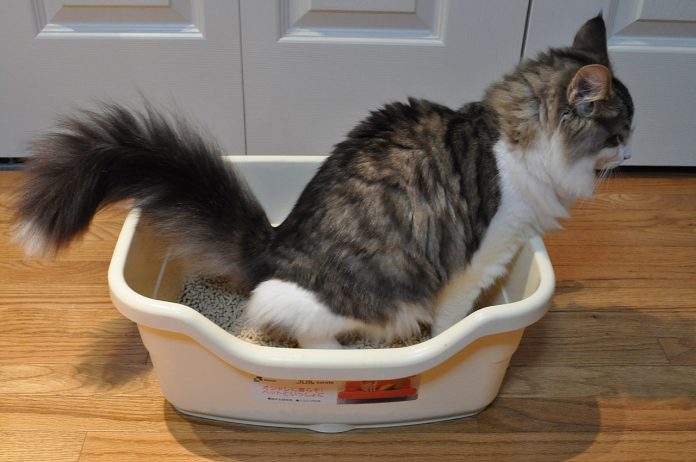A cat missing the litterbox or refusing to use the litterbox is easily the first, second, and third most common reason a cat owner will seek out veterinary advice. Unfortunately, if not successfully treated, it is also why an owner may elect to euthanize or rehome a pet cat. Effective treatment with a single simple solution is often difficult.
Seeking help for inappropriate urination early is critical. What started as a medical problem can become a habit the longer the cat continues to urinate outside the litter box, then treatment becomes more complicated. Minimal medical workup should include physical examination, bloodwork and urinalysis, and radiographs of the bladder. Radiographs or x-rays will also allow evaluation of a cat’s bones for arthritic changes. Back pain may make a cat avoid stepping into the box and being squeezed into uncomfortable shapes. Very old cats may have some cognitive problems.
Basic management to try and treat cats peeing and/or pooping outside the litterbox starts with keeping the litterbox clean. Use a litterbox that is one and one-half times the length of the cat from nose to base of the tail. Try uncovered and covered litter boxes, if possible. Try cutting a second hole at the other end of the litterbox cover. Keep the litterbox out of high traffic, noisy, drafty areas and provide a little light, especially for elderly cats. Older cats may also need a slightly lower entrance if it hurts to step into the box. Long-haired cats may need hair between the toes and around the rear end trimmed.
Get creative. Try different kinds of litter in boxes, and avoid perfumed litters. Try moving the litterbox to a new location. If the cat had a painful infection or bladder stones, it may associate the current location with pain when he urinated. A litterbox by a furnace that turns on now and then with a loud roar is not the best location.
Rule of thumb in multiple cat households is to offer one more litterbox than the number of cats. If there is conflict between cats in the household it may need to be addressed. If the cat is marking around windows and doors because it’s seeing cats outside the house, that may require action to prevent the cat seeing out of that window or door. Marking territory and anxiety are two of many underlying reasons a cat may eliminate outside the litterbox.
Appropriate medical treatment can be started if your veterinarian finds a medical reason. Behavioral causes are much more complicated. Veterinarians stock two products sold over the counter which can be plugged into the wall to release a pheromone into the air which may reduce anxiety and competition between cats. There is also a veterinary diet called Calm diet, which many of my clients have had success with. There are many effective anti-anxiety drugs on the market today to treat cats, as well as some alternative treatments. In most cases, more than one tool needs to be utilized and finding the combination of effective tools can be a journey before success is achieved.
Over the last few decades, the veterinary profession has become more successful at treating inappropriate elimination in cats, but still treating difficult cases demands a huge commitment and partnership between pet owner and veterinarian.









